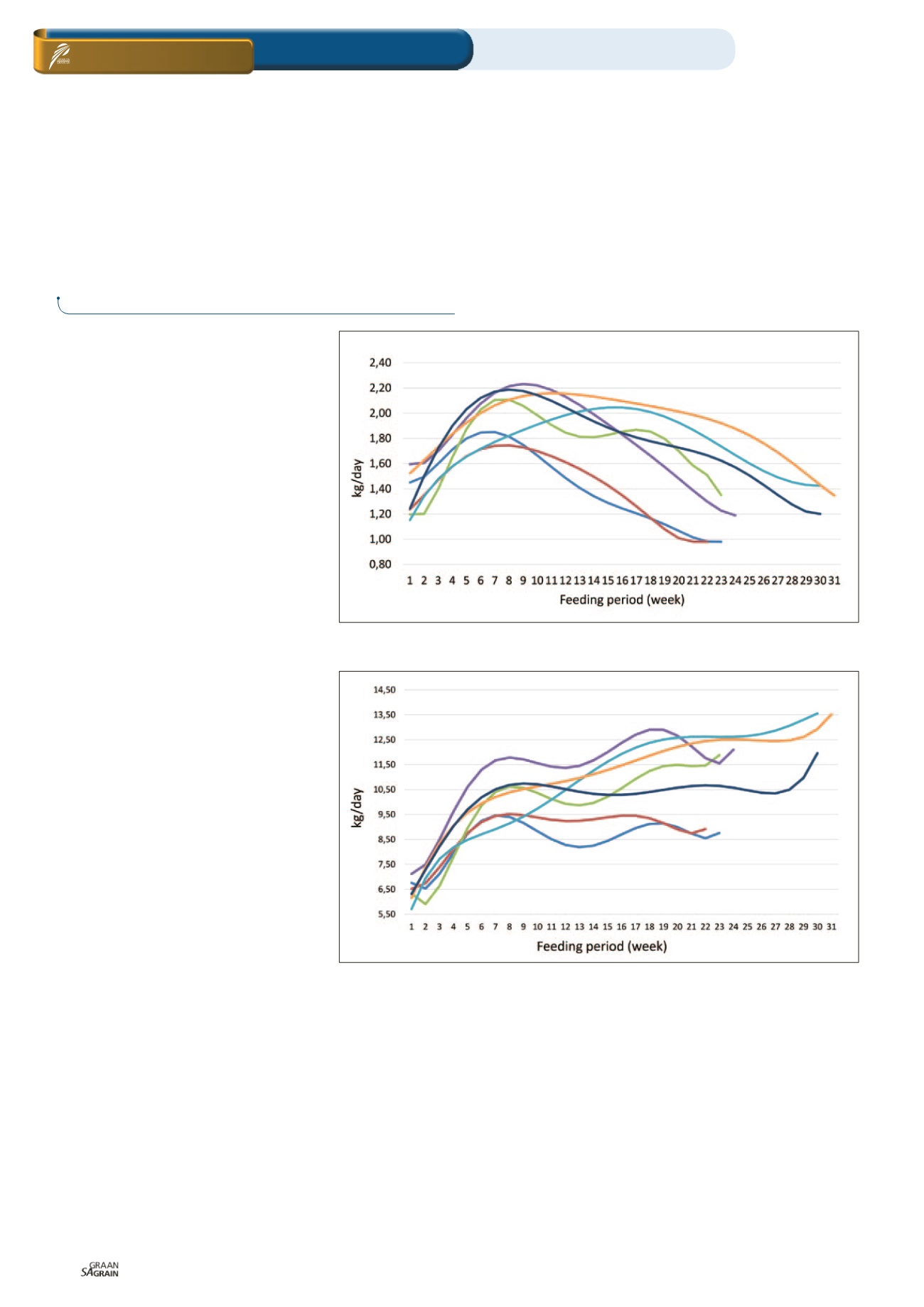

Junie 2018
46
feeding period for cattle
T
he cattle feedlot sector plays a sig
nificant role in the red meat indus
try. Approximately 70% to 80% of
cattle that reach the consumer went
through a feedlot feeding phase to ensure a
market acceptable carcass.
Intensive feeding of cattle in feedlots is cru
cial due to insufficient land and pastures to
raise weaners for the market. Furthermore,
the rate and efficiency to feed weaners for
the market by utilising grain are higher and
can be done in less time, hence the prefer
ence for this system. Feed is one of the ma
jor input costs in a feedlot and has a great
influence on feedlot profitability and there
fore sustainability.
Feedlot profitability is risky and unstable
due to various factors such as input and
output prices, which are market driven and
determined by supply and demand. Pro
duction factors which include growth, feed
conversion and carcass characteristics are
determined by genetics, products, climate
and management, among others.
Variation in price and production factors
have a great influence on profit margins.
The occasional ‘cost squeeze effect’, where
the profit margin decreases due to increas
ing input costs and stable or decreasing
output prices, places even more pressure
on profit margins – hence the importance
of and focus on the effective and productive
use of resources and management.
A solution for the above is precision agri
culture, which can be defined in a simple
two step definition: Firstly identify the ge
netic or natural potential of the animal. After
the capped potential has been determined,
change and adopt the products and pro
cesses to utilise the genetic or natural po
tential optimally.
Results
The Sernick Precision Feedlotting project
of 2015 is a practical example of precision
agriculture in the feedlot. Feedlots gener
ally treat all beef breeds in a homogeneous
programme with a standard feeding period.
The objective of this study was to determine
the profit maximising feeding period for dif
ferent breeds, consequently the differentia
tion between beef breeds. Firstly, referring
to the definition of precision agriculture,
the unique genetic growth and feed intake
curves were determined for each breed
through a feedlot experiment.
Graph 1
indi
cates the average daily gain curves for the
seven different breeds.
It is evident that the initial growth slopes,
peak average daily gain and finishing growth
slopes differ significantly. Feed intake and
feed conversion for the seven breeds are
indicated in
Graph 2
and
Graph 3
. Big dif
ferences are evident, therefore there is
an opportunity to differentiate between the
breeds.
Input and output prices, which are feed and
carcass prices, were incorporated into a
model with the growth and feed intake data.
A production economic theory was used to
calculate the profit maximising feeding peri
od. This theory simply states that maximum
profit will be realised when the marginal ad
ditional value of the product equals the mar
ginal cost, which refers to the value of the
weight gained by the animal and the value
of the feed that it was fed.
The results indicated significant differenc
es between the profit maximising feeding
On farm level
Feedlot / Profitability / Sustainability
Animals
Phillip Oosthuizen,
head: Economics and Research, Sernick Group
Graph 1: The average daily gain curves for different beef breeds.
Graph 2: Feed intake for different beef breeds.
















